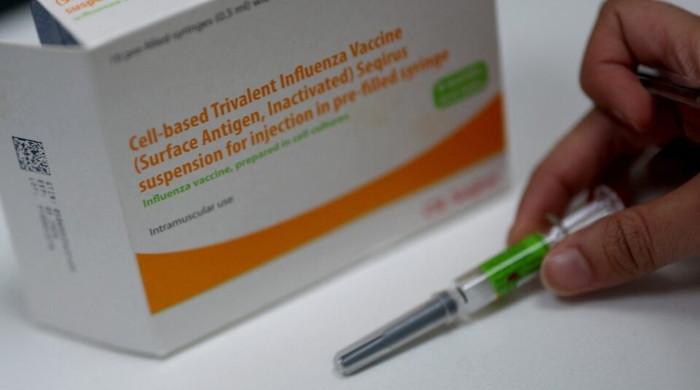World Rabies Day being observed
KARACHI: World Rabies Day is being observed today with aim to raise awareness about the impact of rabies on humans & animals, provide information and advice on how to prevent the disease.Rabies is a...
September 28, 2013
Rabies is a viral disease that causes acute encephalitis (inflammation of the brain) in warm-blooded animals. The disease can be transmitted from one species to another, such as from dogs to humans. For a human, rabies is almost invariably fatal if postexposure prophylaxis is not administered prior to the onset of severe symptoms. The rabies virus infects the central nervous system, ultimately causing disease in the brain and death.
On the occasion of World Rabies Day, the Food and Agriculture Organization of the United Nations (FAO), the World Organisation for Animal Health (OIE) and the World Health Organization (WHO) have united in their goal to eliminate human rabies and control the disease in animals.
Every year, an estimated 60000 people die an agonizing death from rabies, many of whom are children bitten by rabies-infected dogs.
Community participation, education and public awareness are important elements of successful rabies control programmes, and mass vaccination of dogs is critical. Communities need to take responsibility for their dogs, preve nt dog bites and know what to do when bitten.
More than 100 countries report cases of rabies in dogs putting people at risk. Vaccinating at least 70% of dogs breaks the cycle of transmission in dogs and to humans. Rabies programmes need to incorporate free-roaming and street dogs with options for dog population management.
Safe, efficacious and affordable dog rabies vaccines are available, and countries embarking on rabies elimination need easy access to quality-assured dog vaccines for vaccination campaigns and for outbreak management. Vaccine banks can help facilitate procurement and deliveries.
A person who is bitten by a rabid animal still has the chance to survive if the wound is cleaned immediately and thoroughly with plenty of water and soap and post-exposure prophylaxis is provided in time (a course of vaccines and, in severe cases, immunoglobulins). Preventive rabies vaccination can be given to people at high risk of exposure from domestic or wild animals, such as animal health workers, veterinarians or laboratory personnel, to protect them before they are exposed.
Surveillance is an important pillar to understand trends and to guide action in rabies elimination. Disease reporting is essential for identifying risk areas and providing assurance of absence of disease. Laboratory capacity is critical to confirm cases and requires strengthening in many parts of the world.
Besides addressing rabies in dogs, rabies transmitt ed by wildlife also requires attention. In a few regions of the world, rabies transmitted by wildlife has become the most prominent pathway for human rabies transmission, for example bat- transmitted rabies in South America. Changes in the environment and closer human contact with wildlife can lead to increased human exposure to rabies-infected wildlife species. Livestock can become infected with rabies by dogs or wildlife, resulting in economic losses and impacting food security.









